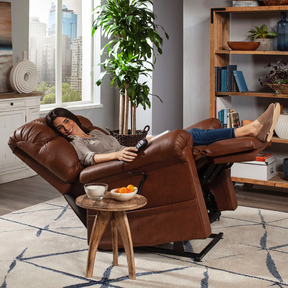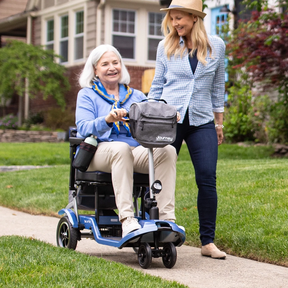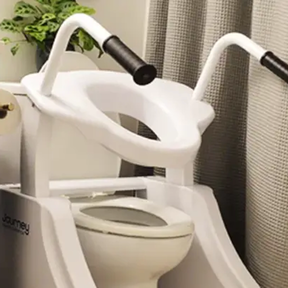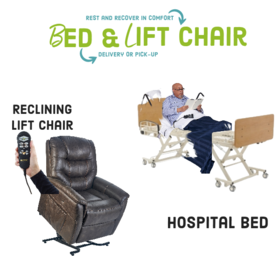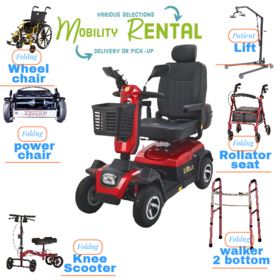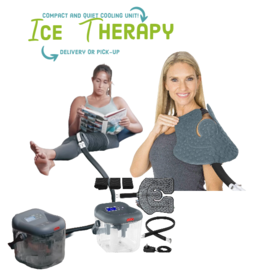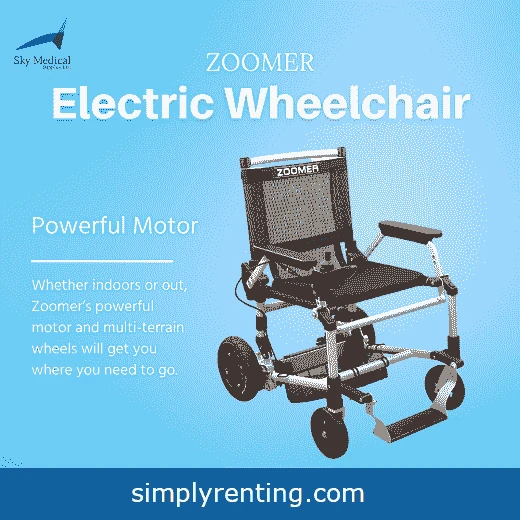Blog What is a Non-Weight Bearing Scooter? Everything You Need to Know
Upon reading the title of this post, your first thought was presumably of children riding loud, small scooters about the town without adult supervision AROUND YOU. Yes, it makes perfect sense. If you've had foot or ankle surgery, you'll have much more freedom to get around thanks to a non-weight-bearing scooter you can use while you heal. Knee walkers eliminate the need for cumbersome and challenging crutches. It's enough to take your mind off the terrifying vision of kids racing toward you on scooters in a busy mall. If you have never seen or heard of a non-weight-bearing scooter before, you will encounter the mobility device that will change how you look at your foot or ankle recovery.
What does it mean to be "Non-Weight-Bearing?"
If your doctor has advised you to be "non-weight bearing" for your damaged ankle, you shouldn't put any of your weight on it until your doctor says it's okay. Just what does it entail to be non-weight bearing after surgery?
There are two common names for the same non-weight-bearing mobility device: knee walkers and knee scooters. This is because a nonweight bearing scooter provides the maneuverability of a scooter and the stability of a walker in one convenient package. You get something that looks like a four-wheeled scooter with a very low seat when you mix these two forms of locomotion. The nonweight bearing scooter aids in foot and ankle healing due to its seat's inability to place any strain on the injured limb during recovery. When you need to go ahead, you can rest your damaged leg on the cushioned seat and use your healthy leg in front of you to propel yourself. It's a huge upgrade from crutches, which can cause pain and discomfort and can lead to a fall if the user slips or trips.
Your health insurance may cover the cost of a weight-bearing scooter, relieving you of that burden. If you are unsure if your insurance will cover your non-weight bearing scooter, you could contact your insurance company and ask about the knee walkers covered under your coverage. People recovering from foot or ankle injuries who want to avoid the excruciating discomfort of using wooden crutches can benefit greatly from utilizing a non-weight-bearing scooter.
Why Being Non-Weight-Bearing Matters?
Due to the inability to predict how much weight your foot or ankle can bear before experiencing pain or damage, doctors will typically advise patients to avoid weight bearing until further notice. As a result, even if the foot is touching the ground, the position is still considered non-weight bearing.
How to Stay Non-Weight-Bearing?
It's a lot less daunting to deal with than it sounds like it would be at first. You need the right equipment to get around without touching the ground with either foot. Crutches are the most commonly used aid for this problem. You must learn the right use of crutches from a medical practitioner if you intend to use them. You can't use them until they're adjusted to your liking, preventing unnecessary stress on your arms and shoulders. Alternate options could be:
Knee Scooter
A knee scooter is quite similar to a bicycle, but for the seat, which is replaced by a pad for the knees. By first putting your injured knee on a pad, you can then use your unaffected foot to walk forward. Protect yourself from injury and avoid having to put any pressure on your foot or ankle by tucking it under you. Thanks to the scooter's handlebars and brakes, you may stop and go as you like, as on a bicycle.
Seated Scooter
It's just like a knee scooter, except you sit on the seat instead of putting your knee on it to propel yourself. Manual and electric seated scooters are both on the market. The ones that require you to use your good leg to push them and the ones that are powered by an electric motor.
What are the Pros and Cons of Using a Knee Scooter?
A knee scooter is one of the most effective substitutes for crutches that you can acquire. You won't strain your upper body as much, risk bruising or pain under your arms, or experience any other discomforts associated with using other equipment. They'll feel at ease far more quickly as a result. However, several drawbacks to using these "scooter crutches" may force you to look elsewhere for a solution. Here's an alternative to knee walkers if you're interested.
Pros
- Knee walkers are a great alternative to crutches because they allow you to go around more quickly.
- It makes getting about much easier than other walking aids like crutches or canes.
- Allow you to use your hands as you choose when you are at rest.
Cons
- One of the negative aspects of knee walkers is the discomfort some users (especially those with preexisting knee conditions) may feel when using one.
- Not being able to use both hands to steer when driving
- The stairs are out of the question.
- Excluded by some but not all insurance plans
Should You Purchase or Rent Knee Scooters?
A knee scooter can be rented or purchased depending on your situation. Although we rarely encounter a policy that does, most insurance plans do not pay for knee scooters. Occasionally, the business will file the insurance claim on your behalf. However, you should expect to submit the claim form on your own.
If your health insurance does not cover the cost of a knee walker, you can buy one for around $155. If you think you'll need mobility assistance for longer than a few weeks, or if there's a chance you'll need surgery on both feet, a knee walker is a wise financial option.
Tags
- contest
- event
- supplies
- design
- brand
- video
- Compression
- upright walker
- four wheel walker
- rollator
- wheelchair
- Ostomy
- elegantly
- elegantly
- accessibility
- Mobility
- knee walker rental
- knee scooter sales
- knee scooter
- post operative shoe
- anti-embolic stockings
- pain management
- cryotherapy therapy
- hot cold compress
- compression stockings
- lift chair
- wound Care
- air purifier
- fall prevention
- cushion
- oxygen therapy
- cpap, bipap
- Hospital Bed
- Life Aide
- EMS
- recovery
- splint
- knee brace
- Bathroom
- patient lift
- medical supply
- Wound dressings
- Lightweight Wheelchair
- hospital beds for sale
- sky medical supplies rentals
- compression socks
- Adult Diapers
- Rollator Walker
- Bed Wedge Pillow
- Hospital beds
- Patient Lifts and Slings
- Portable Oxygen Concentrator
- Patient Lift Slings
- knee scooter rental
- folding mobility scooter
- mobility scooter
- medical shoes
- raised toilet seat
- hospital beds for rent
- lift chair recliner
- chair lift
- electric wheelchair
- Power Lift Recliners for Elderly
- Senior Walkers
- Bedside Commodes
- whill wheelchair
- compression hose
- Whill Electric Wheelchairs
- Bariatric Wheelchair
- Recliner Chairs with Lift
- Colostomy Bag
- Crutches
- Medical Wedge Pillow
- skin barrier tape
- Post Surgery Ice Machine
- Bedside Commode
- chair lift recliners
- cane holder scooter
- lift chair prices
- drop arm commode
- rollator walker with ergonomic seats
- Hospital Bed Rental
- Wheelchair Tray
- Golden Technologies Lift Chair
- Nova GetGo Junior Rollator
- power lift recliners
- Knee Scooters and Crutches:
- stand up walker for seniors
- stand up walker as seen on TV
- Women's Walking Canes
- Knee Immobilizers
- Bed Wedge Pillow
- Medical Supply Stores
- Sit to Stand Lifts
- Grab Bars
- Compression Gloves
- incontinence bed pads
- Lift Reclining Chair
- Knee Walker Scooters
- Hernia Belt Near You
- Mobility Scooter Stores Near Me
- Folding Knee Walker
- Oxygen Concentrator Store
- Inogen Battery
- Electric Bed Frames
- Placing Lift Chair
- diaper brief
Related Posts
Get weekly articles in your inbox on the latest medical supply news, exclusive deals, and helpful health tips.
